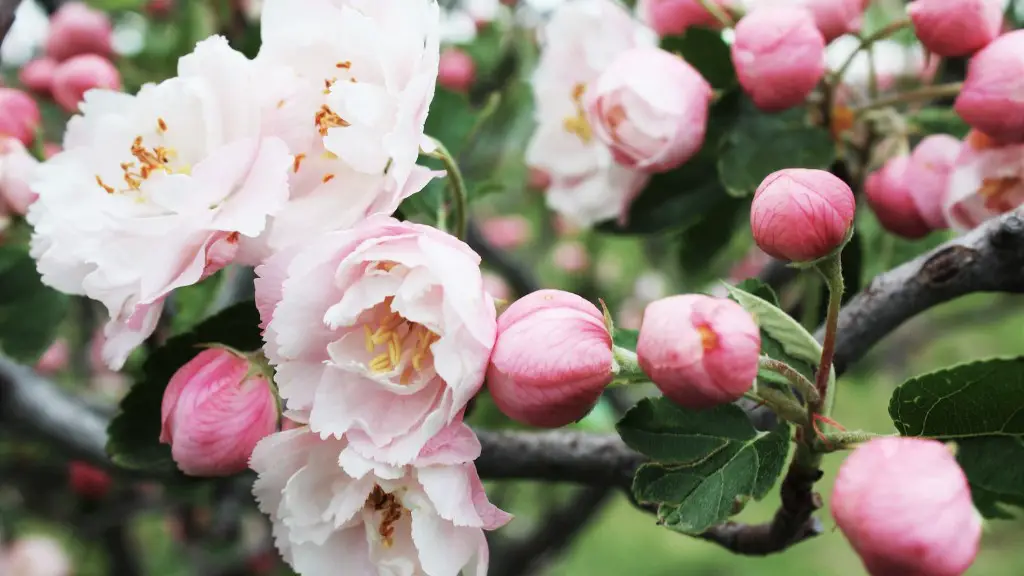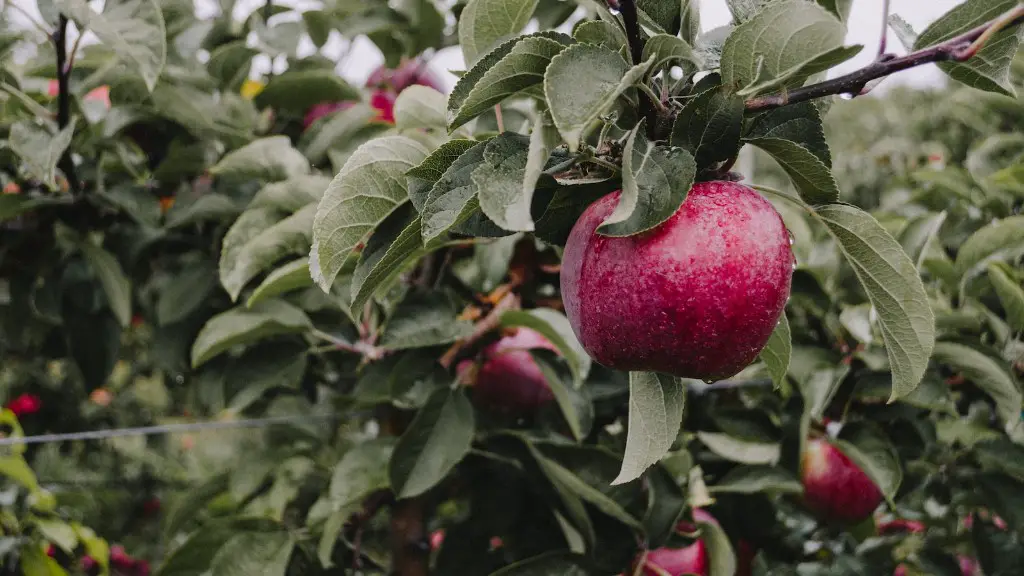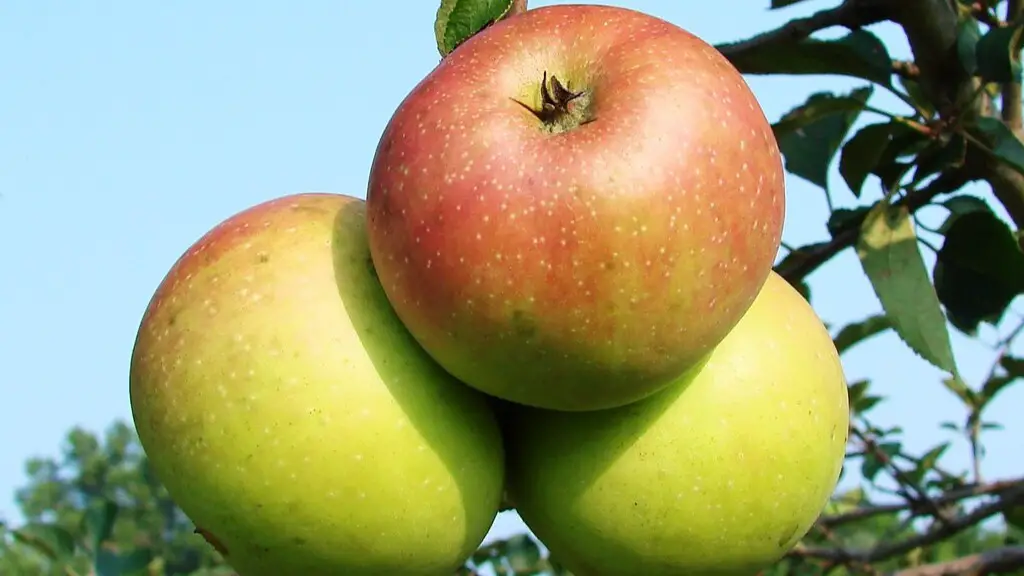Background
Cherry trees come from the genus Prunus and the family Rosaceae, which includes over 400 species of trees and shrubs. They have a shallow root system and a greater root spread than most other trees. The roots of cherry trees require oxygenated soil and have been known to reach depths as deep as 10 feet. However, the roots are not known for penetrating hard or impermeable substrates, such as rocks.
Roots and Water Supply
Cherry tree roots form knots and hollows, making the trees less able to absorb water than trees with other root systems. They are more susceptible to drought, so they must be watered deeply and often to reach their full potential. The root structure of a cherry tree can also become tangled and twisted in the soil, which can create weak places in the stem, leading to snapping and falling branches.
Growth Habits
Cherry tree roots tend to grow outward rather than downward. This means that they are two to three times as wide as they are deep. This outward growth habit means that cherry trees can be difficult to transplant, as the tree will experience stress from the new environment. However, if managed correctly, cherry trees can still be moved or transplanted successfully.
Root Quality
The quality of the soil has a major impact on the size of cherry tree roots. When the soil is richer in organic matter, higher levels of root growth can be achieved. Soils that are poor in nutrients can cause the tree roots to become stunted, reducing the potential for growth.
Nutrient Deficiencies
When a deficiency of certain nutrients is present in the soil, cherry tree roots can become compromised. Without adequate levels of calcium and magnesium, iron, and nitrogen, the tree roots will not be able to obtain the essential elements they need to grow. Additionally, the tree’s overall health can suffer if the soil is too acidic or basic, as this can also lead to nutrient deficiencies.
Diseases and Pests
Pests and diseases can have a serious effect on the size of cherry tree roots. The presence of harmful fungi and bacteria can lead to a weakened root system, which may cause the tree to become more susceptible to drought and other environmental stresses. Also, pests such as root weevils, nematodes, and root-feeding caterpillars can damage the roots and decrease their size.
How Big Are Cherry Tree Roots?
The size of cherry tree roots depends on the overall health of the tree. As previously mentioned, roots can reach depths of up to 10 feet in oxygenated soils, with a length two to three times greater than it is deep. However, if the tree is suffering from pests, diseases, or nutrient deficiencies, the root system may not reach its full potential.
Pruning
Pruning is a critical aspect of cherry tree care and will help ensure optimal root growth. Pruning helps promote healthy root growth by removing weak or dead branches, which can help increase air flow through the root system. Additionally, the removal of excessive foliage allows for more sunlight to reach the roots, aiding in the tree’s photosynthesis process.
General pruning guidelines for cherry trees include cutting off any branches that are dead, diseased, or rubbing against each other. Removing 10 to 20 percent of the tree can help it maintain shape and also encourage root growth. Additionally, cherry trees should be thinned out occasionally to promote air circulation, as this can help prevent the spread of diseases.
It is important to note that cherry tree pruning should be minimal and done primarily to maintain the tree’s shape and health. Pruning beyond the necessary amount could weaken the tree and ultimately lead to less root growth.
Fertilizing
Regular fertilization can also help ensure optimal root growth in cherry trees. The fertilizer should be low in nitrogen, as too much nitrogen can cause a deficiency in other major elements. It is best to provide a slow-release fertilizer, such as a 10-10-10 solution, which can provide the tree with a steady supply of nutrients. Additionally, soil tests can be conducted to ensure that the soil is not deficient in any essential elements.
Using a fertilizer specifically for cherry trees can also help promote better root growth. These types of fertilizers typically contain small amounts of iron, magnesium, and sulfur, which are essential elements for optimal root growth.
It is important to note, however, that too much fertilizer can be harmful to cherry trees, as it can lead to root burn and other issues. Additionally, fertilizing should not be done while the tree is in a dormant state, as this can lead to additional problems.
Mulching
Applying mulch around the base of a cherry tree can help promote healthy root growth. Mulch helps maintain moisture levels in the soil and provides additional nutrients for the tree. It is best to use a course-textured mulch, such as bark, as this will help prevent the roots from becoming compacted. The mulch should be applied in a 3 to 4 inch layer and kept at least 5 inches away from the trunk of the tree.
Mulch can also help inhibit weed growth, which can be a major competitor for the tree’s resources. Additionally, mulch can help keep fungi and bacteria from reaching the roots and causing diseases.
It is important to note that too much mulch can lead to root rot and can potentially suffocate the tree’s roots. Additionally, mulch should not be applied during the winter months, as this can lead to winter injury.
Propagating Cherry Trees
Cherry trees can be propagated by either seeds or cuttings. When propagating by seed, it is best to purchase a pre-dried and stratified seed. The seeds should then be planted at a depth of 4 to 6 inches and watered regularly. When propagating by cuttings, it is best to take a cutting from an existing healthy tree. The cuttings should then be planted in a rooting medium and placed in a bright area that is free of drafts.
When propagating cherry trees, it is important to keep the root system healthy. Over-watering or under-watering can lead to root problems, so it is best to water the plants regularly and allow the soil to dry out slightly before re-watering. Additionally, it is important to provide adequate drainage and avoid areas with standing water.
Finally, it is best to use a well-draining potting mix or soil mix when propagating cherry trees. This will ensure that the roots are adequately nourished and can obtain the necessary amount of oxygen. Additionally, it is important to use a soil that is low in nitrogen, as too much nitrogen can lead to nutrient deficiencies and stunt the root growth.
Soil Temperatures
The soil temperature is also an important factor to consider when it comes to the size of cherry tree roots. Ideal soil temperatures for growing cherry trees range from 65-75 degrees Fahrenheit. The roots of cherry trees can become stressed if the soil temperature gets too hot or too cold. Additionally, extremes in temperature can lead to nutrient deficiencies, which can stunt the root growth.
It is best to water cherry trees slowly and deeply to help regulate soil temperatures. Additionally, using a shade cloth or mulch can help maintain cooler temperatures and reduce water loss. During the winter months, it is best to water the soil sparingly and keep the soil covered with a layer of mulch.
When it comes to selecting a spot for planting a cherry tree, it is best to look for an area that receives at least six hours of direct sunlight a day. Planting in a sunny location will help ensure that the tree receives the necessary amount of sunshine, as well as the ideal soil temperature for optimal root growth.
Pest and Disease Management
It is important to regularly inspect cherry trees for signs of pests or disease. Diseases such as root rot, fungus, and canker can have a major impact on the size and health of cherry tree roots. Pests such as root weevils and caterpillars can also cause damage to the roots.
To prevent pests and diseases, it is important to keep the tree well-watered and mulched and to prune it regularly. Additionally, inspecting the roots regularly can help identify any potential problems early and prevent further damage.
If pests or disease are present, it is important to take action as soon as possible. Pesticides and fungicides can be used to control pests and diseases, although it is best to avoid using them as a preventative measure. Additionally, using natural predators, such as ladybugs and lacewings, can help to naturally manage pests.
Finally, maintaining the overall health of the tree is key. Adequate nutrition, watering, and pruning will help ensure that the tree is in the best possible condition and can help promote healthy root growth.





